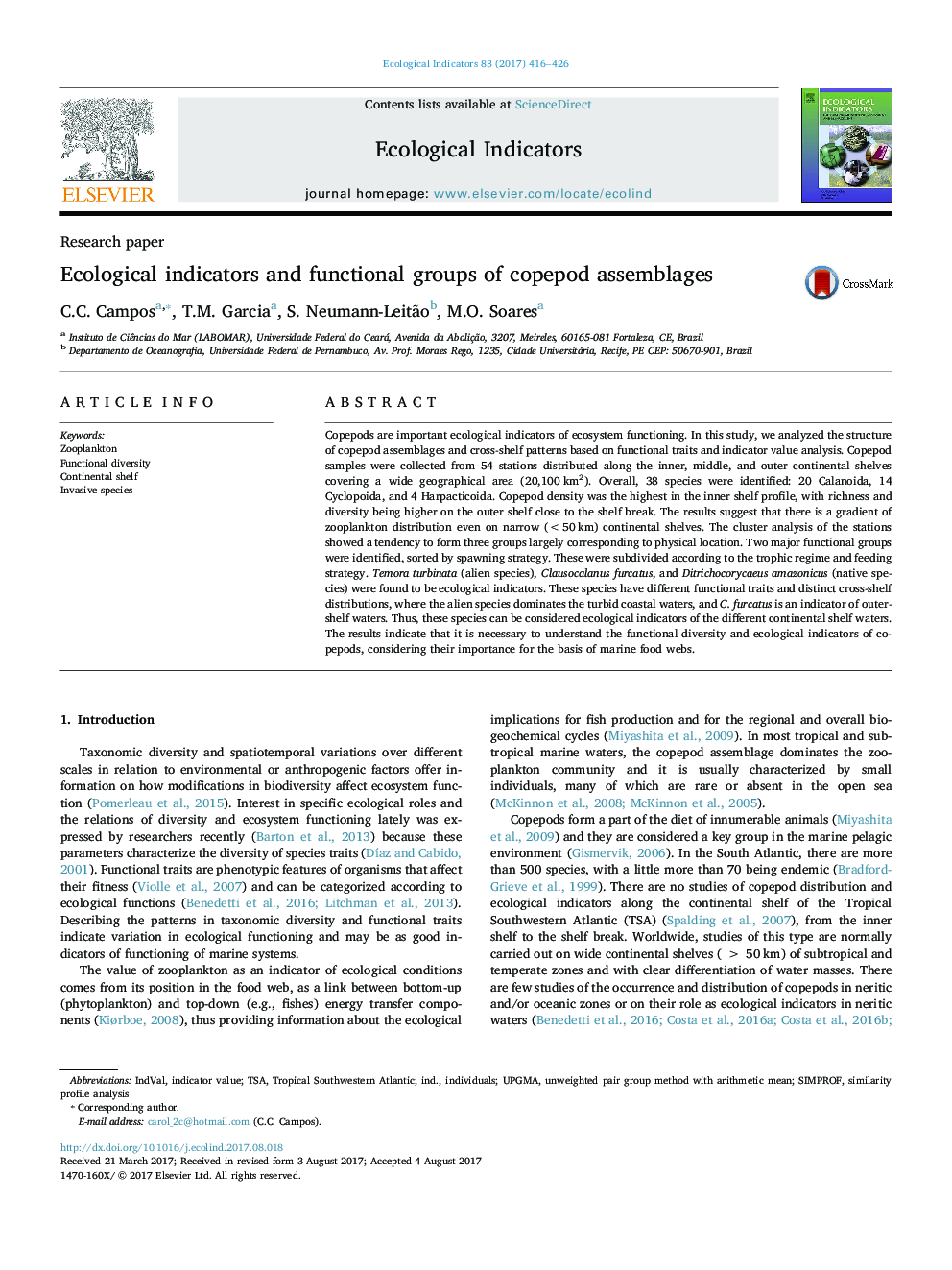| کد مقاله | کد نشریه | سال انتشار | مقاله انگلیسی | نسخه تمام متن |
|---|---|---|---|---|
| 5741511 | 1617119 | 2017 | 11 صفحه PDF | دانلود رایگان |
- Copepod assemblages were characterized by functional traits and indicator values.
- Richness and diversity were higher on the outer shelf.
- Two major functional groups were identified (sac-spawners and broadcasters).
- Three species were ecological indicators with distinct functional traits.
- Temora turbinata is an invasive species that dominates the coastal waters.
Copepods are important ecological indicators of ecosystem functioning. In this study, we analyzed the structure of copepod assemblages and cross-shelf patterns based on functional traits and indicator value analysis. Copepod samples were collected from 54 stations distributed along the inner, middle, and outer continental shelves covering a wide geographical area (20,100Â km2). Overall, 38 species were identified: 20 Calanoida, 14 Cyclopoida, and 4 Harpacticoida. Copepod density was the highest in the inner shelf profile, with richness and diversity being higher on the outer shelf close to the shelf break. The results suggest that there is a gradient of zooplankton distribution even on narrow (<50Â km) continental shelves. The cluster analysis of the stations showed a tendency to form three groups largely corresponding to physical location. Two major functional groups were identified, sorted by spawning strategy. These were subdivided according to the trophic regime and feeding strategy. Temora turbinata (alien species), Clausocalanus furcatus, and Ditrichocorycaeus amazonicus (native species) were found to be ecological indicators. These species have different functional traits and distinct cross-shelf distributions, where the alien species dominates the turbid coastal waters, and C. furcatus is an indicator of outer-shelf waters. Thus, these species can be considered ecological indicators of the different continental shelf waters. The results indicate that it is necessary to understand the functional diversity and ecological indicators of copepods, considering their importance for the basis of marine food webs.
122
Journal: Ecological Indicators - Volume 83, December 2017, Pages 416-426
